On September 8, 2004, international playground safety consultant Monty L. Christiansen (today retired Professor Emeritus, Penn State University), presented the keynote address to the Japan Playground Facilities Association (JPFA) National Playground Safety Conference entitled “International Playground Safety Standards − An ASTM International Case Study: The American Experience in Retrospect: Best Intentions Gone Awry”. The conclusions presented by Professor Christiansen thirteen years ago are still very relevant today to all playground standards writing organizations. This paper revisits these points and enlarges them in perspective of the international situation today. Public playground safety standard stakeholders convening in Canada on November 20 – 22, 2017 will be discussing the possibility and need for a worldwide safety standard for playgrounds and equipment.
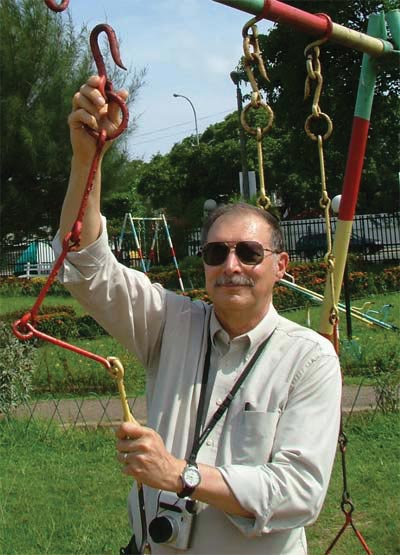
Monty L. Christiansen (retired Professor Emeritus, Penn State University) in Sri Lanka, 2005
I had the pleasure of working with Professor Christiansen (hereafter “Monty”) on many projects related to the care and feeding of public playgrounds primarily in North America, but also in Asia and Europe. We two, along with Dr. Fran Wallach, created the National Playground Safety Institute (NPSI) in 1989 under the umbrella of the National Recreation and Park Association (NRPA). Monty was never satisfied with the limited scope of the NPSI and eventually founded the International Playground Safety Institute (IPSI) in 2005. He had a vision to bring playground management and public playground safety issues to other like-minded parts of the world who shared in his passion for safe yet challenging play spaces for all children. The formation of IPSI came about as a result of very successful 1995 and 1999 International Conferences on Playground Safety held at the Penn Stater Conference Center, University Park, Pennsylvania, both conferences chaired by Monty. Selected portions of the proceedings of these conferences are being reprinted and distributed to prepare participants for the November 2017 Toronto Conference: Harmonizing Opportunities Towards a World Playground Standard. While Monty is unable to participate in the Toronto Conference, his past words and efforts will help to define the task at hand as we wrestle with the future direction of playground safety standards.
I have taken the liberty, with his approval, to re-emphasize his concerns and challenges to all stakeholders while bringing a bit more focus to where the playground safety standards movement is today thirteen years after his invited keynote presentation in Japan.
Many organizations are actively involved in promoting best practices for public playground management. Each has the children’s best interest in mind however, their approach to the myriad of issues involved are often at opposite ends of the continuum between what a risk is and when the level of risk of harm becomes a hazard. I see a fine line between what is considered acceptable risk and where the risk of harm exceeds what society considers acceptable. Regardless of what side of this line you find yourself I think we can all agree there is a need for challenging play experiences for children of all abilities. We also can agree that challenge should not pose a risk of harm which exceeds the balance of the benefits of risky play versus the determent of an increase in debilitating and life-threatening injuries.
In North America, several documents influence public playground management decisions when it comes to playground safety issues. One is a guideline published by a federal agency, the United States Consumer Product Safety Commission (CPSC). Another is a voluntary performance standard established by the American Society for Testing and Materials International (ASTM), the world’s largest non-government standards development organization. Over the past 25 years ASTM has published many more playground equipment and impact attenuating surfacing standards. In Canada, CSA Z614 is a very comprehensive standard related to the many aspects of the public playground environment. The application of this safety criteria has had some diametrically polarized results, which can serve as examples of issues to be considered by all standards writing organizations when it comes to children’s consumer products.
Need for playground safety standards
The need for playground safety standards in the United States arose as a result of several serious injuries and fatalities that occurred during a relatively short time period in the last 30 to 40 years. These injuries were sensationalized through local and national print and broadcast media. It was a perfect storm brought about by the need for more public playgrounds, the media’s interest in some of the more serious injuries, and rising number of litigations filed demanding compensation for recovery of injury costs and punitive damages. Several huge financial awards consequently led to a strong public demand for increased safety. Many well minded individuals and organizations believed the problem of playground injuries was “solvable.” They believed the problem of rising frequency of serious playground injuries could be resolved through the development and compliance to safety standards based upon facts learned through the collection and analysis of injury data.
Impact of safety standards on playgrounds: Linking Cause and Effect
Initially, these safety recommendations have resulted in:
- More multi-play composite structures and fewer freestanding single event play components
- More single-surface areas to reduce costs associated with the required protective surfacing under and around all play components
- Fewer to almost no forced motion equipment resulting more often in less challenging stationary equipment
- Less opportunities to stimulate imagination, more specificity in design leading to very similar cookie cutter type designs
- More repetitive climbing events as a result of the very popular post and deck composite structures leading to less variety of use
- Environmental stimuli (wind, sun/shade, sound, movement, natural play materials, dirt/sand and water) are now seldom taken into account in playgrounds
- Too many new playgrounds consist of only a single multi-play composite structure with one type of surfacing material which is selected primarily on cost and the manufacturer’s claim their materials meet he minimum standard requirements for impact attenuation and accessibility, where applicable. This is sort of a Swiss Army Knife approach to multi-use.
- Playgrounds are no longer a spacious play space with separation of various equipment and structures, with space to run, jump, roll, etc. on the surface when off the equipment.
These outcomes are based on:
- Fear of litigation and associated costs
- Cost of compliance to today’s safety recommendations
- Need to comply with accessibility legislation.
- Lack of open space
Safety criteria are a result of identifying hazards through accident data analysis, sharing past industry experience, known litigation, applying requirements based on anthropometrics and an understanding of how children will use the structures in unintended ways. Anthropometrics is better known as the application of body measurements by ages of the intended users to make the man-made environment more user friendly. As a result of these actions more playgrounds are being designed for a limited age group which can prevent multi-age interaction found in a reasonably safe public space intended for use by all people.
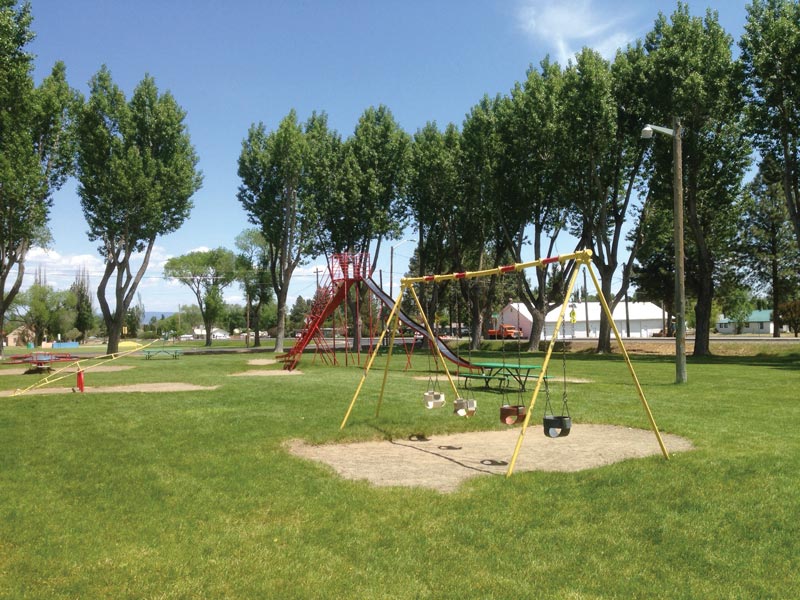
Playgrounds without proper safety surfacing increase the likelihood of fall-related injuries.
Change of U.S. accident data after 35+ years of safety standards
In the U.S., strike-impact fatalities have decreased and head and neck entrapment deaths have almost been totally eliminated. Strangulation fatality percentages have increased; however it seems many of these are more about how the child is dressed and what they bring with them to the playground than the equipment entanglement hazards created by the equipment configuration or improper or inadequate inspection and maintenance practices. Fall-related percentages, primarily an increase of long-bone injuries and concussions, have increased. Many speculate this statistic is more about the use of unitary surface systems that do not disperse and cause more direct stress and less user lateral movement after initial impact, but this may also be attributed to a surface systems being installed at or near the maximum impact threshold limits allowed. There international community is recognizing that all the playground safety surfacing performance standards are based upon the reducing the likelihood of a serious head injury, specifically brain concussion as a result of a vertical fall and the sudden resulting impact onto the falling child’s head. A vertical fall with the child landing directly on their head is a rather uncommon occurrence, but concussions can occur other than in this scenario. In the Zurich 2008 International Conference on concussion, the mechanism of a concussion was defined as an impact to the head or upper body that transfer energy to the head and brain. The gold standard when developing today’s standards for fall impact related injuries might well be to consider all mechanisms of serious injuries. We know that standards and their rationale were first developed on information based on research available over 50 years ago with the goal to prevent death. We also know there is new research and data available today but standards writing organizations have been slow to see the need for and embrace any new approach to injury reduction in impact injuries resulting from falls to the surface. If reduction in serious injuries is an international health mandate for children why aren’t we looking beyond just critical and severe head injuries and consider all types of serious fall related injuries? Some have argued the rationale for such change is based on the automotive industry and not on research related to the actual playground. This is a true statement but have we forgotten that all the research used to get the playground industry to where it is today on fall related injuries and other impact injuries comes from the automotive industry?
Impact of safety standards on play value
In Monty’s words, “When you give a child a new hammer, he believes everything must be hammered.” In the 1990’s new safety standards (“New Design Hammer”) became the number one selling point for anyone wanting to build a new playground or for any manufacturer’s sales associate trying to sell more of their product. After all who does not want to provide a safe place to play for a child? In the 2000’s the ADA requirements became the new selling point for playground owners and manufacturers. Many said these playground safety and accessibility standards would be the end of public playground. Many predicted the rise of playground safety and accessibility standards would result in fewer playgrounds and therefore fewer play opportunities for children. This has not been the case. Unfortunately, many playground equipment manufacturers, designers, and owners in the North America, after adoption of playground safety standards and accessible guidelines, designed new play equipment and overall playground area designs primarily with safety and accessibility in mind, and as a result play value may have suffered. New playgrounds became predictable and offered fewer challenges and little stimulation. Fewer challenges lead to boredom and with boredom can come unintended misuse and the consequences that come with this sort of unintended use. Playground owners and designers alike need to understand that with repetition comes mastery; but what happens after mastery? After mastery repetition becomes redundant and boring. Play must be based upon children’s physical, social, emotional, and intellectual levels and must include opportunities for increasing ability, challenge, and competencies as well as opportunities for interactive play with others.
We need a better method to measure impact of the new standards. The U.S. has a fairly good system of correlating the application of the standards to injuries. While this system is certainly not perfect and is in need of some updating to reflect today’s industry practices, it does meet the original need. On the other hand it may not be prudent to encourage much more sophistication in playground accident documentation because it may actually put too much emphasis upon the safety aspect of the playground thereby having the exact opposite effect of stunting play value, increasing boredom and injuries resulting in eliminating playgrounds altogether.
These facts have started a new discussion on the need to take one of two approaches to standards development. Option 1, we must better define today’s play components (Types) and the many variations of each so those responsible for assessing the compliance of these play components can make a definitive assessment on whether something meets the minimum requirements of the standard. Option 2, we must adopt a new approach to standards writing which focuses less on assessing compliance of play component types based on past definitions or perceptions of how something was previously designed and used and start looking at how something might be used and what potential hazards a child might encounter during reasonable foreseeable misuse. The complexity of trying to identify “what free spontaneous play is and where it occurs” coupled with the ability of designers of children’s playgrounds to “predict how children interact with things in their play environment” makes the first option a futile waste of time, energy, and cost. The time has come for a new approach to play area safety standards starting with a solid consensus of our current standard scoping statements followed by a thorough review of all existing playground equipment and surfacing performance requirements. The opportunity for such a new approach is now.
Obstacles and Opportunities to Free Active Play
Childhood obesity in the U.S. has increased dramatically over the past twenty years or so. Several causes are known, including high consumption of a high fat, high sugar, and high carbohydrate diet at home, at fast-food restaurants, and at school. Another possible cause: loss of or shortened recess and physical education in primary and secondary education schools. Another possible cause: less emphasis upon outdoor experiences, play and sport participation, more participation with passive recreation interests such as watching television, personal computer, gaming systems and cell phones; making online social networking easier and more addicting. It may be that children are finding their playgrounds boring and do not return to these areas to use. While overly safe, sometimes referred to as boring, playgrounds cannot be assigned full responsibility for the increased obesity of children, there does need to be a better, quantifiable means to determine the impact of playground provisions to not just safety, but also to fitness and health of children.
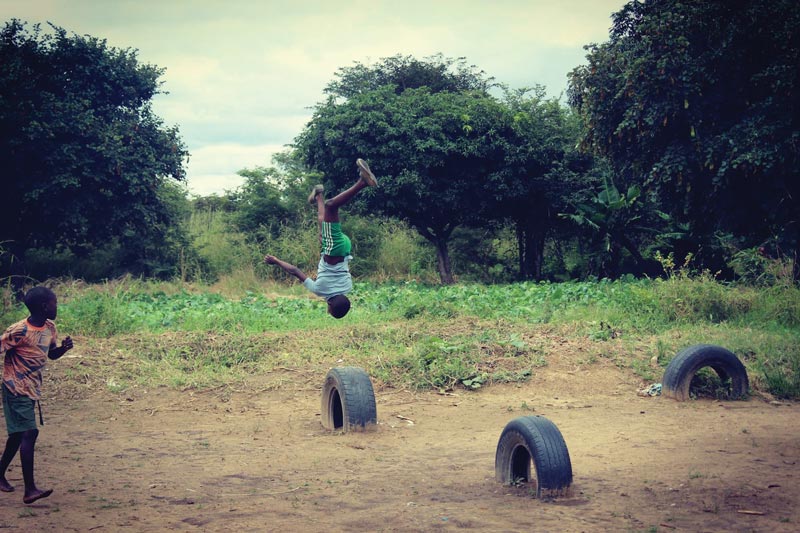
We need to distinguish between “risk” and “hazards” on playgrounds
We need to provide a variety of risk or challenge opportunities (tolerable or managed risk), but minimize exposure to hazards known to cause debilitating and life-threatening injuries. We need to recognize that “safety” is relative. Nothing is completely safe. Children do need to learn the consequence of activity, of experimentation, of play. Sometimes the consequence is unpleasant, whether the result is disappointment, embarrassment, or physical pain. Low-level pain is not bad and should not be designed out of the possibility of consequence. In other words, too much safety is not necessarily good. The child’s ability to experience failure in a reasonably safe environment is very important to their development. No child should be able to succeed each and every time they try something new. Experiencing failure on the playground is not a bad thing. Lessons learned on the playground are much easier to overcome and learn from than making bad decisions years later when mistakes and poor judgements can be devastating and much harder to overcome.
Almost 20 years ago a call was made for an open public discussion and debate on the best approach to establishing a proper balance between risk and safety. Today that same need exists but I suggest we reframe the question. We need to have an open public discussion and debate on the best approach to establishing a proper balance between challenge and injury prevention for our children’s sake and for the sake of society as a whole when our children become adults. We need to identify and consider all the variables that impact a child’s ability to access free play opportunities that stimulate and inspire their imagination.
Monty’s Conclusions (2004)
“Compliance with playground safety criteria is not a guarantee that injuries will be eliminated. Safety criteria should not be design-restrictive. There should be some safety absolutes but there should also be some safety principles that have more flexibility in application. Just as there is variety in food safety and preparation, so too should there be variety in playground safety and development. In the U.S. we do distinguish between home-based playgrounds, soft contained play systems, and public playgrounds. These few distinctions may be too limited. The setting and function of playgrounds may eventually have a larger part in the application of design and safety of playgrounds in public settings. Children have different play needs at pre-school care centers, at schools, at housing estates, at shopping malls or restaurants, and at holiday venues. In some settings, provisions for periodic change may be needed as novelty and challenge diminishes over time. Playgrounds may eventually be considered to be multi-generational, where children are not segregated from adults and older or younger children into “age-appropriate” play areas; but where parents, grandparents, and siblings may interact with each other while engaging in play. The application of anthropometrics will have to take this into consideration. But playgrounds are not “safe” because they are designed for specific child sizes and task-skill capabilities; they are “safe” because the children using them receive confidence, perceptions of stimulation and gratification, and simple pleasure from playing there.”
Ken’s Conclusions (2017)
Much of what Monty said still has relevance, however a number of things have occurred since 2004. We need to add a bit more emphasis on some factors that primarily impact playground owners but still have an impact on designers and manufacturers alike. We live in a different world today. Many things have changed over the past 30 to 40 years when the playground safety movement was born and since Monty’s 2004 overview of the situation. We have many more playground related standards to consider. We now have standards for when and where public playground fencing is required. This requirement is based upon its proximity to a hazard which by definition makes it a vulnerable play area. These fences must be designed to restrict exit of the child but also must keep safety hazards outside the playground. These hazards might be a body of water, unauthorized persons, or motor vehicles. Special gates and locking mechanisms are required. Fences must be hazard free, of a specified minimum height, and non-climbable. Where does this stop? One solution does not seem practical with so many variables. How do owners manage such a responsibility when most have unrestricted public access and are not supervised? Supervision or the lack thereof has always been a major concern when it comes to injury prevention. The U.S. Consumer Product Safety Commission first acknowledged this in writing in documents leading up to the first 1981 Handbook. This was one of the injury prevention factors being considered when the CPSC decided it was in everyone’s best interest to not develop a Federal playground safety law. CPSC decided it was more appropriate to develop a playground safety guide consisting of various recommendations that would assist in developing safe public play spaces for children. Beside supervision, the CPSC considered age appropriateness, anthropometrics, site selection and layout, and of course protective surfacing performance. Today, supervision seems to be an even more important issue to the owner depending on the type of playground and the intended user group. The public has distinctly different perception of supervision when you compare an unsupervised and uncontrolled public park to a public school. A school playground will obviously be used and monitored during school hours by supervisory staff but it may also be used by the general tax paying public when school is not in session and the playground is not being supervised. Compare these types of play areas to a licensed child care operator’s facility. These facilities require a whole different level of supervision. Supervision is implied and expected by the parent. The cookie cutter approach to public playgrounds is not always the best approach to safety standards or guidelines. Today standards writing organizations have come to realize that prescriptive use standards for the design of playgrounds and playground equipment is a waste of time and effort. These organizations are no more able to keep up with innovation in play apparatus design than they are able to limit its usage to intended design use.
Yesterday’s standards were based on injuries sustained over a period of time on the existing types of conventional equipment. The era of the composite post and desk continuous play system is still alive. This type of system serves large numbers of users on one structure and utilizes much less open space than the old fashioned free standing equipment. Today many designers are now going the way of what has been coined “deck-less play systems.” They are creating more challenging play events and for less money. “Mega tube-slide towers” are a trend at destination playgrounds to create the “Wow Factor” with their great vistas. This concept is being coupled with the technology for manufacturing huge seamless stainless steel slides. This has created very high and long sliding experiences through contained access by what is described as “non-climbable structures” where user access is created within the structure. It is also becoming more and more common to see manufacturers and designers combining both similar and/or different equipment types on top of one another. This has made the application of some playground standards difficult to apply in any consistent fashion. The creation of man-made topography or utilizing existing topography is creating an additional play experience commonly referred to as “play mounds.” These play mounds are replacing the flat play surface in an effort to add imagination and challenge to the playground environment while also reducing fall heights and the related surfacing costs. When these slopes are created they can create other challenges. They may pose potential trip or fall safety concerns to the general public just by being within the play area. Should the surface on or around these mounds be constructed of something other than hard surface? What are the considerations when play components are placed on or adjacent to the base of these mounds? The desire to increase challenge for all playground users introduces a new dimension of management and responsibility for the manufacturer, designer and owner who continue to push the playground design envelope. Local designers, such as Landscape Architects, are pushed to be more involved in the design of play environments and the location of play components. What considerations should be given to their responsibilities and obligations in the overall safety component of the final design?
Public playground design and management are entering the era of the risk/challenge and hazard assessment. More consideration needs to be applied to not just the intended design use and how it complies with today’s safety standards but the need to consider reasonable foreseeable use/misuse must also be considered especially for the youngest and most vulnerable users.
Children all over the world need and want to take risks when they play. For children taking a risk is a choice, while hazard assessment is not within their realm of experience or expertise. Play provision aims to respond to these needs and wishes by offering children stimulation, challenging environments for exploring and developing their abilities. In doing this, play provision aims to manage the level of risk so that children are not exposed to unacceptable risks of death or serious injury. (Play Safety Forum, 2002)
Providing challenge for all children, including those with impairments, is important in good play environments. When developing an open access play space, the widest possible range of abilities needs to be considered, as it is vital to retain different levels of challenge for all. (British Standards Institutions, 2013)
Many issues must be considered if the manufacturer, designer, installer, and owner/operator are doing their job. A one size fits all approach is not going to meet the needs of every user. Likewise one playground standard is not likely to be able to address each and every need. Some compromise must always be made along the way. If we are going to be successful in developing a harmonized international playground safety standard the path to be taken will undoubtedly require commitment from all involved, patience and understanding, and yes, compromise.
During play, children are often driven by the challenge to do things that takes them to their limits, which in turn, leads to a better knowledge of themselves through experience. This challenge often corresponds to a sense of risk as there are chances for success or failure, even when the probability of an injury is minimal. (British Standards Institution, 2013)
“...safety must be considered at all stages of play provision but, inevitably, there will be a risk of injury when children play as there is a risk of injury in life generally. We must not lose sight of the important developmental role of play for children in pursuit of the unachievable goal of absolute safety.” Health and Safety Executive in Play Safety Forum, 2002



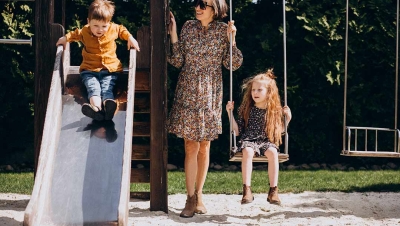
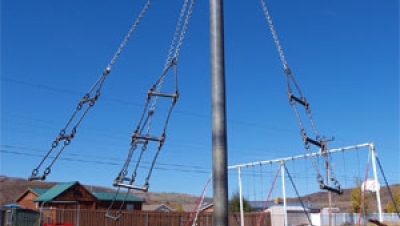
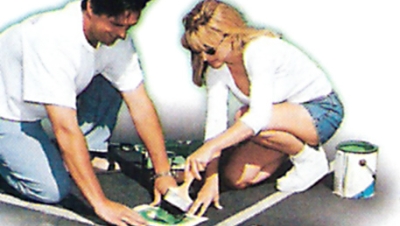







Superb Commentary on the state of playgrounds today
This is the best assessment and historical accounting of playground development I've seen. Having designed play systems for 50+ years I can attest to the accuracy of the article The clarion call for a candid discussion is much needed and I hope it will be headed. I have chosen to address the issues Ken has identified by turning my attention to early childhood programs where we can create play settings and programming to ensure that children have the physical skills and a keen sense of risk assessment needed to become competent and confident wherever they may be. After all, the real world is not anything like what we have created on today's playgrounds.
Link to the reference
Here is a link to the summary of Monty Christianson's presentation. https://www.playgroundprofessionals.com/playground/maintenance-inspecti…
looking for a reference from your blog
Where can I find this article by Monty Christianson that you mention: “International Playground Safety Standards − An ASTM International Case Study: The American Experience in Retrospect: Best Intentions Gone Awry”.
Add new comment